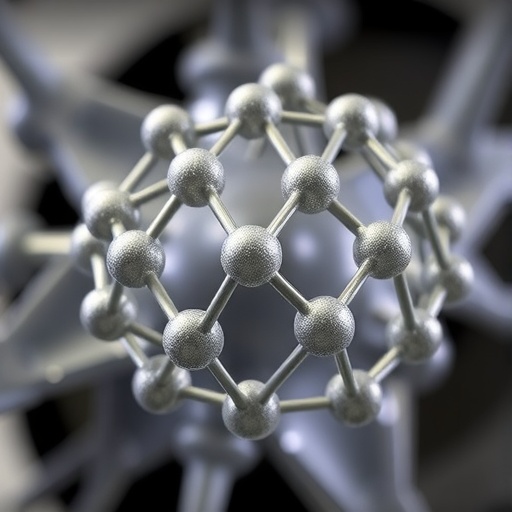Recent advancements in battery technology have made a significant impact on energy storage solutions, particularly in the quest for sustainable and efficient systems. A recent study published in “Ionics” showcases the promising developments in sodium-ion batteries, particularly highlighting the enhancements made possible through innovative materials and synthetic techniques. This research focuses on the doping effects of aluminum and the application of amorphous aluminum oxide (Al2O3) coatings to sodium vanadium manganese phosphate (Na4VMn(PO4)3), leading to remarkable improvements in both cycling stability and rate performance.
The researchers, Liu et al., embarked on this study with the goal of addressing the limitations often seen in conventional sodium-ion battery technologies. Standard batteries frequently suffer from issues such as inadequate cycling efficiency and rate capability, primarily due to electrode material limitations and poor interaction at the electrode-electrolyte interface. Through a two-step synthesis approach, this study introduces a novel method that not only enhances the structural integrity of the electrode materials but also significantly improves their electrochemical performance.
One of the pivotal aspects of the research was the incorporation of aluminum doping into the Na4VMn(PO4)3 matrix. Aluminum, known for its lightweight and high conductivity, presents unique advantages when used as a dopant. This study meticulously details the changes in structural properties and how they correlate with the performance metrics of the batteries. The aluminum dopant plays a crucial role in modifying the electronic structure of the host material, leading to enhanced ionic mobility, which is fundamental for high-performance battery operation.
The amorphous aluminum oxide coating acts as a protective barrier around the sodium vanadium manganese phosphate particles, which is critical in real-world applications to prolong battery life. This coating not only mitigates the detrimental effects of moisture and other environmental factors but also facilitates better ion diffusion pathways. The study explores how the coating’s uniform distribution contributes to a more stable electrode, which, in turn, translates to improved cycling performance over extended periods.
To validate their findings, the researchers conducted rigorous electrochemical testing, including charge-discharge cycles and rate performance evaluations. The results of these tests marked a significant advancement over previous benchmarks, demonstrating not only enhanced capacity retention but also exceptional rate capability that could potentially meet the demands of modern electronic devices and electric vehicles. This dual enhancement is largely attributed to the synergistic effects of aluminum doping and the protective coating provided by the amorphous Al2O3 layer.
Additionally, the paper discusses the implications of these advancements for commercial battery production. The two-step synthesis process employed in this study is not only straightforward but also cost-effective, making it suitable for large-scale production. The practical applications of this research extend beyond simply improving existing technologies; they also pave the way for new advancements in energy storage solutions that can fulfill future energy requirements sustainably and efficiently.
The innovative nature of this research holds immense potential in catapulting sodium-ion batteries into a more competitive position against lithium-ion options. Given the increasing demand for eco-friendly and accessible energy storage, efficient sodium-ion batteries present a viable alternative. The authors posit that as this technology matures, it could lead to significant reductions in manufacturing costs and improved battery reliance for consumers globally.
This study is a testament to the rapid advancements occurring in materials science and battery technology, showcasing how thoughtful engineering and material selection can lead to revolutionary enhancements in energy storage systems. The findings encourage further exploration into doping strategies and protective coatings, with researchers already pursuing additional modifications that could yield even greater performance metrics.
As the push for energy efficiency and sustainability continues to grow, innovations like the aluminum-doped Na4VMn(PO4)3 with Al2O3 coating not only address current challenges but can also redefine the landscape of energy storage technology. The ambition of this research team adds to a growing body of work aiming to harness the unique properties of various materials for better performance, ensuring that the future of energy storage is bright.
Moreover, the ability to easily fabricate these materials hints at a promising future for their integration into consumer electronics and renewable energy systems, including solar and wind energy storage solutions. As researchers delve deeper into optimizing these materials and their production methods, we can expect to witness exciting developments that could change the way we think about energy storage.
In passing, the authors of this study emphasize not just the technical advantages these new configurations bring but also the broader implications within the field of sustainable energy. They stress the importance of research directions focused on finding alternatives to lithium-ion batteries, which possess challenges related to resources, cost, and environmental impact. Their work serves as a clarion call to further invest in sodium-ion technology, which stands poised to take the stage in the quest for sustainable energy solutions.
As awareness grows surrounding the energy crisis, studies like this serve as vital contributions to the scientific community and industry as a whole. The research team encourages collaboration across disciplines to expedite the development and adoption of cutting-edge battery technologies that can support a more sustainable future. Thus, this study opens the door to further exploration and potential breakthroughs in energy storage technology.
In summary, the innovative approach illustrated in this research illuminates the path forward in optimizing sodium-ion batteries, setting a new standard for performance improvements that could cater to the energy demands of our modern society. The potential impact of these breakthroughs on both technology and the environment cannot be overstated, emphasizing the critical need for ongoing research and development in the field of materials science and energy storage systems.
Subject of Research: Enhancements in sodium-ion battery performance through aluminum doping and Al2O3 coating.
Article Title: Enhanced cycling and rate performance of Al-doped and amorphous Al2O3 coating Na4VMn(PO4)3 prepared through facile two-step synthesis.
Article References:
Liu, XX., Pan, ZT., Xu, Y. et al. Enhanced cycling and rate performance of Al-doped and amorphous Al2O3 coating Na4VMn(PO4)3 prepared through facile two-step synthesis. Ionics (2025). https://doi.org/10.1007/s11581-025-06640-3
Image Credits: AI Generated
DOI: https://doi.org/10.1007/s11581-025-06640-3
Keywords: Sodium-ion batteries, aluminum doping, Al2O3 coating, cycling stability, rate performance, energy storage.




